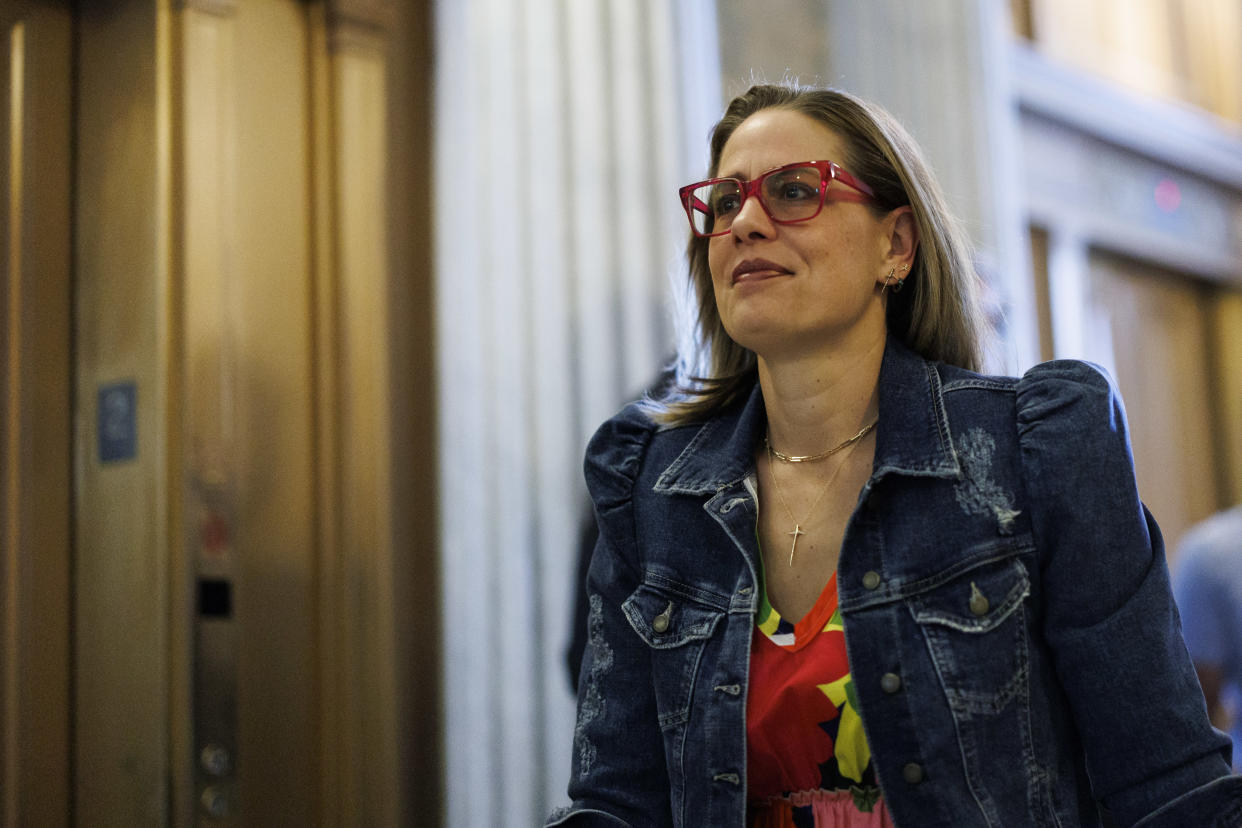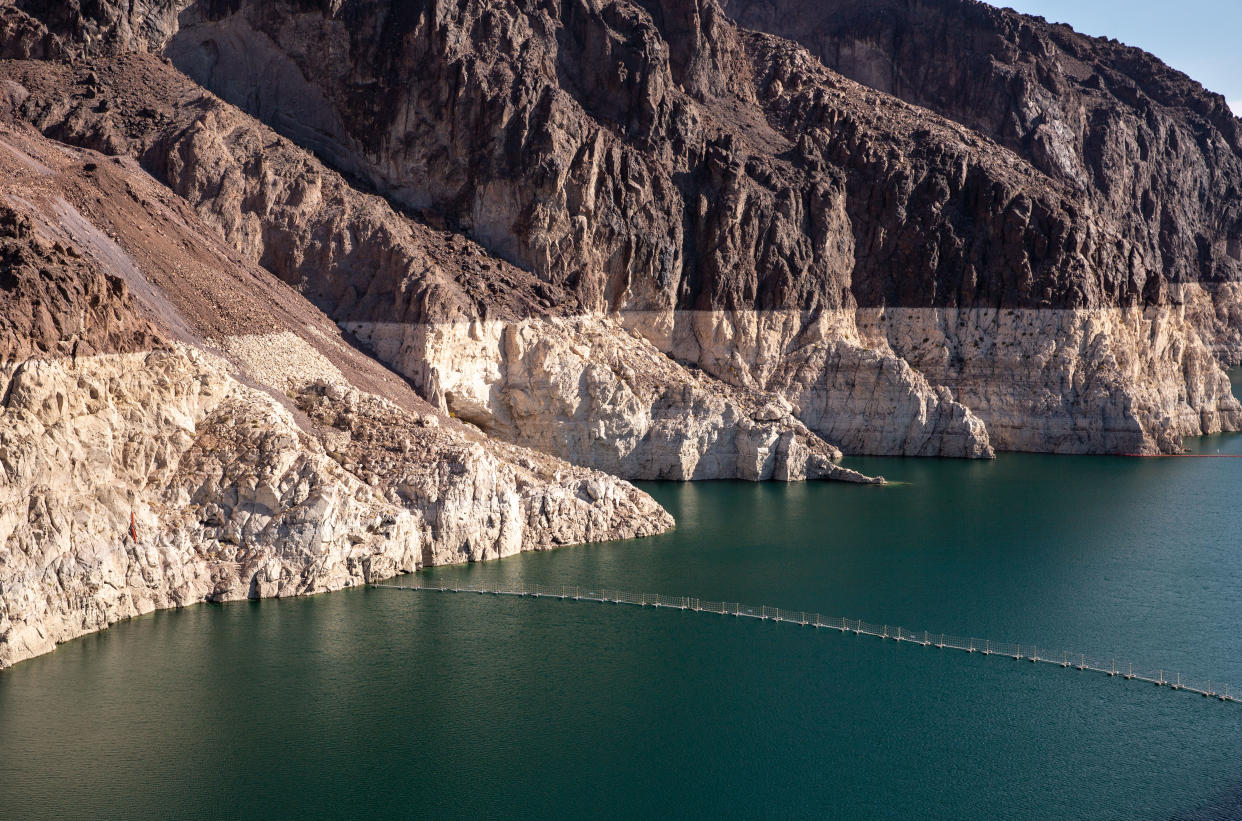Why Sen. Sinema insisted $4B for drought relief be added to IRA
In exchange for supporting the Inflation Reduction Act, Sen. Kyrsten Sinema, D-Ariz., insisted that the legislation leave in place a tax loophole that benefits high earners in the private equity and real estate industries. That deal set off a flurry of media speculation about her motives, but it wasn’t the only successful request she made in order to secure her vote for the landmark climate legislation.
To properly address climate change, Sinema told her fellow Democrats, the bill needed to provide an extra $4 billion in funding for mitigating the effects of drought on her home state and the American West.
Unlike preserving the loophole that benefits wealthy campaign donors, the drought funding has resonated with local voters.
“I have not been a fan of some of the roadblocks that Sinema’s put up against the bill, but she came through in the end, and I think the addition of the drought money was extremely, badly needed and an extremely important part of making it a good bill,” Hazel Chandler, a Phoenix-based field coordinator for Moms Clean Air Force, an environmental advocacy nonprofit, told Yahoo News. “I’m really excited about it.”

A Senate aide told Bloomberg News that the funding would be used to secure private water rights and to help municipalities conserve water. The goal is to increase the level of water in the Colorado River system, on which Arizona relies for much of its water for homes and farming.
The funds will also go to aiding farmers who are contending with water supply problems by helping them find ways of maintaining crop yields with less water, KOLD News 13, a CBS television affiliate in Tucson, Ariz., reported.
“In Arizona, we know right now we are facing an unprecedented 1,200-year drought, so this legislation is going to allow us to help provide some compensation to farmers in the short term who may have to have their fields go fallow for a short period of time,” Sinema told the outlet.
The desert state has always been dry, but climate change and a growing population have made water scarcity a bigger problem. Hotter average temperatures, increased water evaporation and more extreme weather, including stronger heat waves, have plunged the Southwest into an ongoing drought since 2000. The last 20 years have been the driest two decades in the region in 1,200 years, according to research published earlier this year.

The last two years, which have been more than 2 degrees Fahrenheit (1.1 Celsius) warmer than the historical average in the region, have been particularly dry. From January 2020 through August 2021, the Southwest received the lowest total precipitation and had the third-highest daily average temperatures of any 20-month period since 1895, according to the National Oceanic and Atmospheric Administration.
The Colorado River has been so diminished that last week the United Nations Environment Program warned that Lake Mead and Lake Powell, which are both man-made reservoirs on the river, are at “dangerously low levels.”
“The conditions in the American West which we’re seeing around the Colorado River Basin have been so dry for more than 20 years that we’re no longer speaking of a drought,” Lis Mullin Bernhardt, an ecosystems expert at UNEP, said at the time. “We refer to it as ‘aridification’ — a new, very dry normal.”
In June, Camille Calimlim Touton, the commissioner of the Bureau of Reclamation, told the Senate Energy and Natural Resources Committee that maintaining “critical levels” at Lake Mead and Lake Powell will require large reductions in water deliveries.

“What has been a slow-motion train wreck for 20 years is accelerating, and the moment of reckoning is near,” John Entsminger, general manager of the Southern Nevada Water Authority, said at the same Senate hearing.
Last year, California, Arizona and Nevada signed an agreement to take less water from Lake Mead, and in May the Department of Interior announced it is withholding some water that would have been taken from Lake Powell to prevent the reservoir from dropping so low that Glen Canyon Dam would not be able to generate electricity. (The lake is on the border of Arizona and Utah.)
“I drove to Lake Powell a year ago, and I was just appalled by what I saw,” Chandler said. “It used to be that the lake came clear up to the road for miles, and it was so beautiful, and the lake now looks like it’s miles away. The only place you find the lake against the road is at the dam.”
Sinema was not the only one pushing for the drought-relief funds. Democratic Sens. Mark Kelly of Arizona, Catherine Cortez Masto of Nevada and Michael Bennet of Colorado issued a joint statement announcing that the money had been secured in the legislation.

“The Western United States is experiencing an unprecedented drought, and it is essential that we have the resources we need to support our states’ efforts to combat climate change, conserve water resources, and protect the Colorado River Basin,” the senators said in a statement last Friday.
“In the Southwest, our biggest threat is not enough water — drought — and it’s taken a big toll on our state,” Chandler said. “It’s really concerning. This is our water supply. If we don’t pay attention to this, our children could be climate change refugees because they have no water.”
Whatever the Democratic Party’s disagreements over Sinema’s insistence on the carried-interest loophole, Chandler and Sinema agree on the imperative for Arizona to find new ways of using water more efficiently.
“Our job," Sinema told KOLD, "is to find ... innovative ways to reuse water, to be efficient with water and to find new ways to engage in farming to keep those yields while using less water.”


